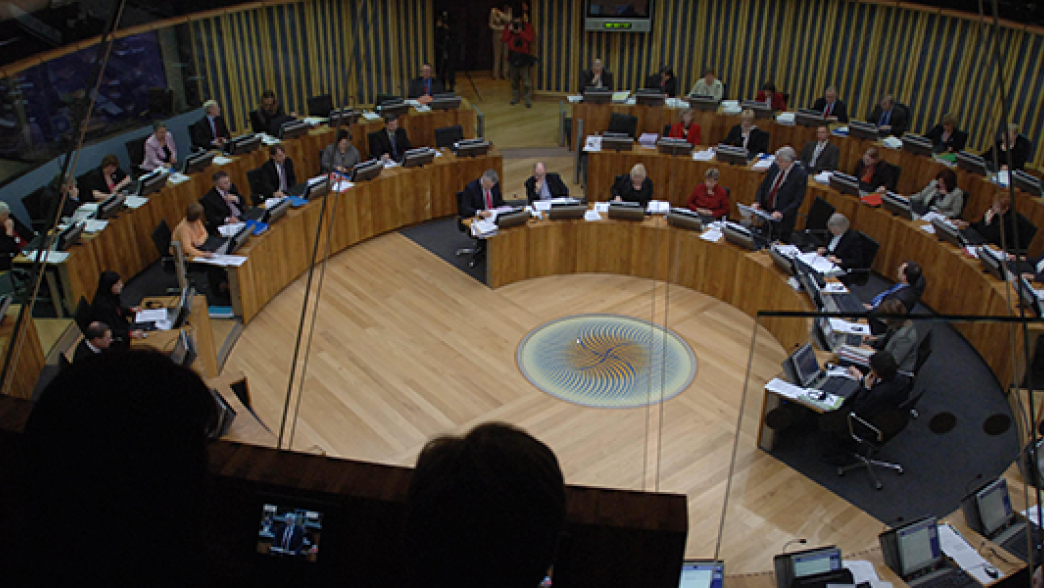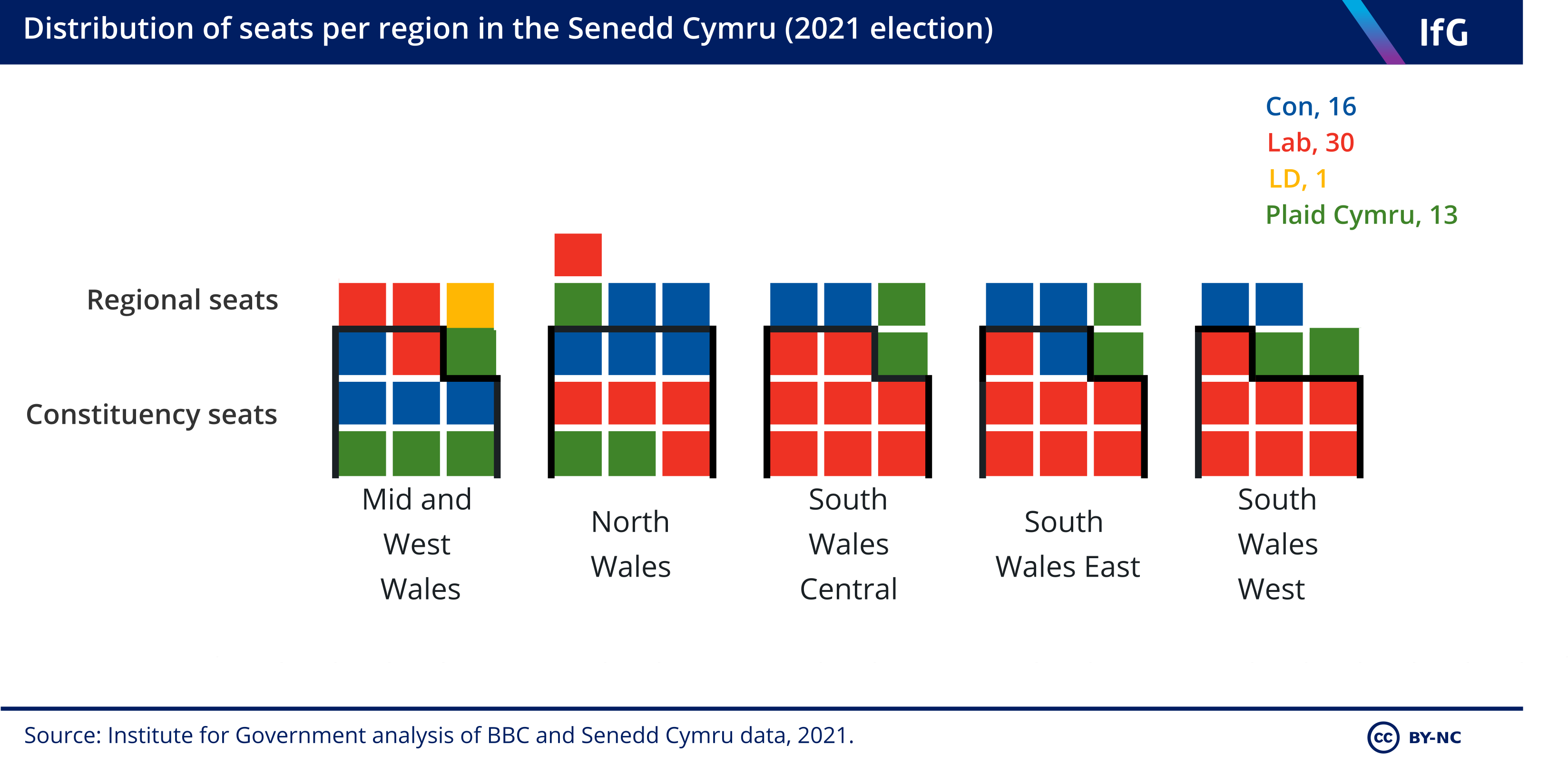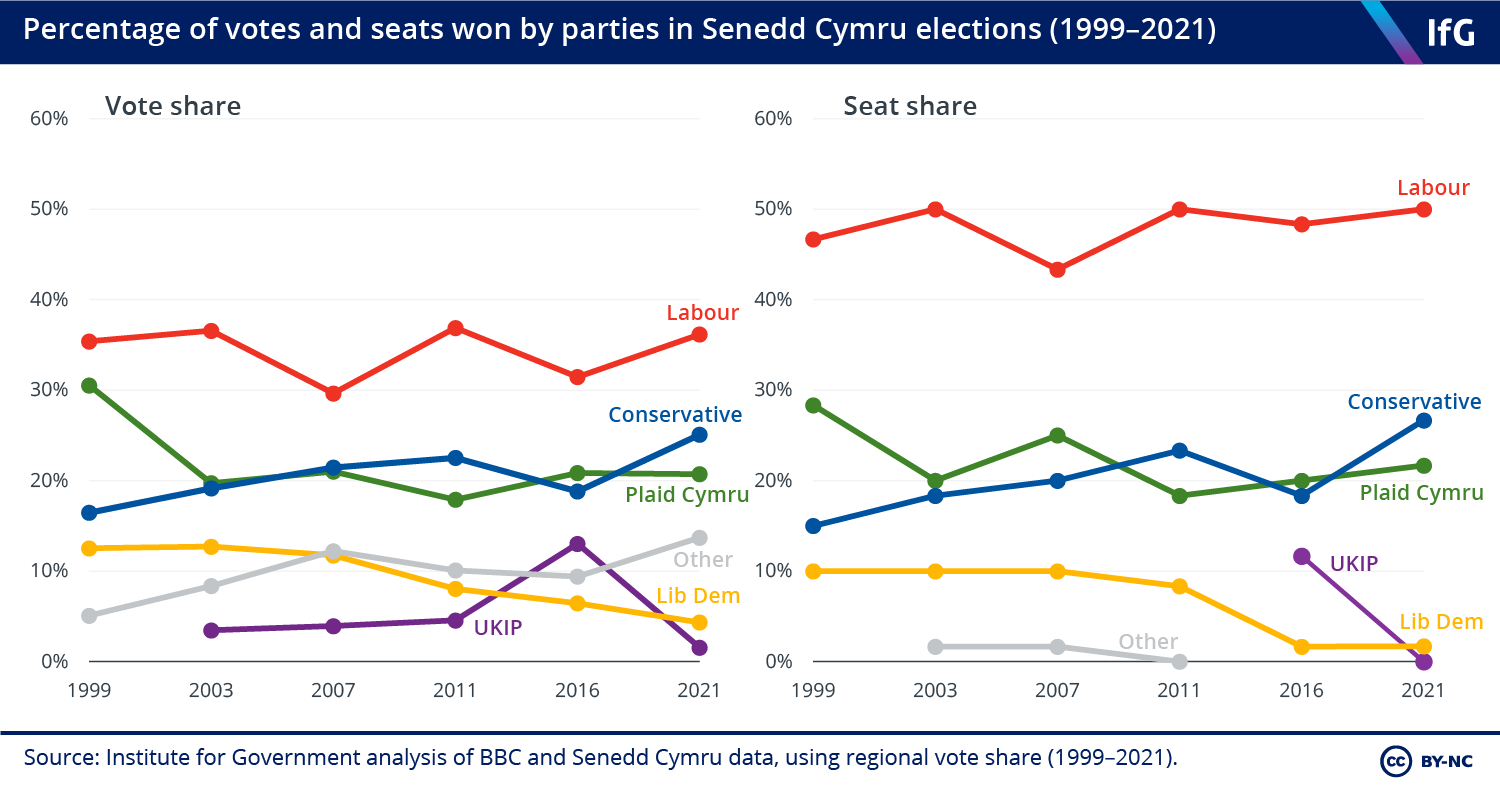Senedd Cymru (Welsh parliament)
The Senedd Cymru (Welsh parliament) in Cardiff is the devolved legislature of Wales.

The Senedd Cymru (Welsh parliament) in Cardiff is the devolved legislature of Wales. It is unicameral, meaning that, unlike the UK parliament at Westminster, it only has one chamber.
Why was the Senedd created?
Senedd Cymru was originally created as the National Assembly for Wales in 1999 as part of the Labour UK government’s plans to devolve power to Scotland, Wales and Northern Ireland. Devolution to Wales was intended to allow for decisions on key services to be taken by “people directly elected by, and accountable to, Welsh voters”, and “above all else… provide a clear and distinctive voice for Wales”. 12 https://commonslibrary.parliament.uk/research-briefings/rp97-129/
The creation of the Welsh assembly was approved in a referendum in 1997 (in parallel with a vote in Scotland) with a slim majority of 50.3% of votes cast in its favour, on a turnout of 51.3%. Previous proposals for a Welsh assembly had been defeated in a 1979 referendum, with 79.7% of votes cast against the proposals.
The new assembly took on the executive functions previously held by the (central government) Welsh Office and had the power to make secondary legislation in those areas – that is, law created under powers given by specific acts of the UK parliament. But it did not initially have the power to pass primary legislation, which was a significant difference to the Scottish parliament created at the same time.
What powers does the Senedd have?
The Senedd has power to make laws over many key areas of Welsh life. These include most aspects of health and social care, housing, education, local transport, economic development, social services, language and culture, the environment, and local government.
It also has some tax-raising powers, including control of local taxes, taxes on property transactions (stamp duty land tax) and landfill, and the power to vary income tax rates in Wales.
The Senedd has a more limited scope of powers than the Northern Ireland assembly and Scottish parliament. In particular, it has no power over policing and justice in Wales, which remain the responsibility of the UK government.
How has devolution in Wales changed over time?
Ron Davies, secretary of state for Wales when the National Assembly for Wales was created, described devolution as “a process, not an event”. This has certainly been the case in Wales, which has seen several acts of parliament increase its powers and law-making abilities (along with the other devolved institutions).
The Government of Wales Act 2006 formally separated the legislature (the National Assembly for Wales) and the new executive (the Welsh Assembly government). The Assembly was also empowered to pass pieces of primary legislation known as ‘measures’, dependent on Westminster granting it the legislative power over a specific policy area on a case-by-case basis.
In February 2010, assembly members voted in favour of a referendum on further law-making powers, for which the UK parliament passed enabling legislation. In March 2011, the new powers were approved with 63.5% of voters in favour, on a turnout of 35%.
The Wales Act 2014 devolved fiscal powers to the Welsh assembly for the first time. This included devolving stamp duty, business rates and landfill tax, providing new capital borrowing powers for Welsh ministers, and providing for the devolution of a portion of income tax.
The Wales Act 2017 made large changes to the devolution settlement for Wales. These included a change to a ‘reserved powers’ model of devolution, in which the default is that all policy areas are devolved unless explicitly excluded. The Act also devolved powers to Wales over elections, transport, energy, and the natural environment.
The assembly was also given the power to change its own name. In November 2019, this power was exercised, as the assembly voted to change its name to bilingual Senedd Cymru or Welsh Parliament. This came into effect on 6 May 2020.
How is the Welsh government funded?
The majority of the Welsh government’s funding comes from an annual block grant from the UK government calculated using the Barnett formula.
Using last year’s block grant as a baseline the formula, the formula increases or decreases the Welsh block grant based on changes to spending in England on functions that are devolved, taking into account and population share.
Following a 2016 deal with the UK government, Wales receives 105% of any spending increases in England, on a per-capita basis. For example, if spending on health care in England increases by £100m, the Welsh government’s block grant would increase by £5.9m, since Wales’ population is 5.6% of England’s, and this is then multiplied by 105%. However, under the terms of the formula, the Welsh need not also spend this sum on health care.
The Welsh government also receives income from devolved taxes and a share of Welsh income tax revenue. In 2018, it was estimated that these covered around £5 billion in tax revenues, roughly a third of Welsh government spending at that time. 13 Wales, 20 February 2013, www.gov.uk/guidance/devolution-settlement-wales
Which parties are currently represented in the Senedd?
There are currently four political parties represented in the Senedd. The largest party is Welsh Labour, which holds 30 seats and has been in government since 1999.
The next largest parties are the Welsh Conservatives and Plaid Cymru, with 16 and 13 members respectively. There is also one Liberal Democrat member, but Senedd rules means that the party does not have enough members to form a political group and be represented on committees.
How do Senedd elections work?
The Senedd is elected via a voting system known as the additional member system (AMS). Each voter has two votes; one is used to elect a constituency member to represent their local area. This part of the election uses the first-past-the-post counting method where the candidate with the most votes is elected – similar to UK general elections.
The second vote is cast for a political party on a regional basis. Constituencies are grouped into five large regions which each elect four ‘top-up’ members to make the composition of the Senedd more proportional to overall vote share.
This part of the election uses a special formula (the d’Hondt method) that takes into account the vote share for each party and balances this out against the number of seats already won in the constituency vote, to calculate the number of top-up seats each party is entitled to. 14 Wilson H.J., 'The D’Hondt Method Explained', Mathematics Department, UCL, www.ucl.ac.uk/~ucahhwi/dhondt.pdf. Members are then chosen from a list drawn up by each party before the election, in order of preference.

What happens after the Senedd elections?
Typically, the Senedd must meet within the period of seven days beginning immediately after the day of the poll (not including weekends).
However, the Welsh Elections (Coronavirus) Act 2021 extended this deadline for the first meeting to 21 days after the election. This was to provide some flexibility and cater for a potential delay in counting ballots and confirming results. 16 Welsh Government, Welsh Elections (Coronavirus) Bill, www.senedd.wales/media/kukp15ds/pri-ld14059-em-e.pdf In the event, the Senedd reconvened on 12 May 2021, 11 days after the election. At that meeting, Welsh Labour leader Mark Drakeford was re-elected as First Minister.
What has happened at previous Senedd elections?
Welsh Labour has been the biggest party in the Senedd since it was created, winning between 26 and 30 seats at every election since 1999. Labour has also been in government, either in coalition or alone, throughout the 22 years of devolution.
At the 2021 election, Labour equalled its best performance, winning 30 seats for the third time. The Conservatives also achieved their best result in terms of both their share of the vote and seats, electing 16 members. Plaid Cymru won 13 seats, making a net gain of one seat on the last election, while the Lib Dems remained on one seat. None of the smaller parties – such as UKIP, Abolish the Assembly, and Propel – and independents which had held seats in the previous parliament were re-elected.

- Keywords
- Local elections
- United Kingdom
- Wales
- Legislature
- Senedd
- Publisher
- Institute for Government